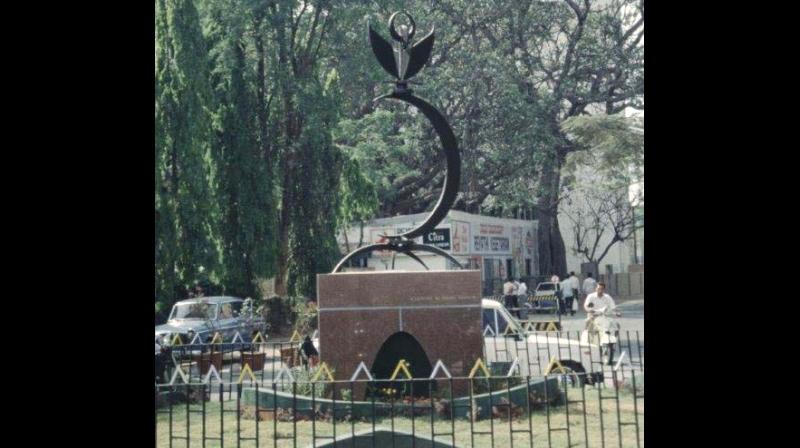Where have all my sculptures gone?
Nambiar's struggle for a law to protect art in public spaces began in 2004 when the sculpture on Lavelle Road died a custodial death\".

Bengaluru: A sizeable collage makes for an arresting sight, placed at the top of the corridor that leads into the Balan Nambiar retrospective, Sculpting in Time, at the National Gallery of Modern Art (NGMA). Beside it is an empty space, just as conspicuous, where Balan Nambiar's painstaking note originally hung. 21 works done over the course of his career have been lost or disfigured, made for outdoor spaces where vandalism is always a danger. This is Nambiar's nod to public and administrative apathy towards art in public spaces, a cause he has defended for over a decade.
He returned a couple of days after the inauguration on February 4 and found, to his dismay, that the display had been taken down. "I was very angry, enough to close the exhibition if it wasn't allowed on the wall." Interventions by curator, Sadanand Menon, prevented this from happening and the show ran its due course, to close on March 4.
Nambiar's struggle for a law to protect art in public spaces began in 2004 when the sculpture on Lavelle Road “died a custodial death," as he puts it. Made in 1980 and commissioned by the Rotary Club, it remained in its spot for 18 years until the traffic police department, in an act bordering on vandalism, conducted a bulldozing operation in the dead of night, bringing down the sculpture and the 'island' on which it stood.
"I lodged a complaint with the Commissioner of Police and it was talked about in the media. Mr M.A. Salim came home and issued a formal apology. That is a good gesture, but nobody can tell me about the sculpture itself!"
Another work, bought by the Tourism Department and placed inside Mayura Restaurant in Cubbon Park, met with a similar fate. "I have no idea where that is either," he said. A four-metre sculpture bought by HMT in 1970, at the Sculpture Exhibition at the Lalit Ashok, also vanished without a trace.
Since then, Nambiar has used every opportunity to step up his fight to protect art. This included his tenure with the National Council of Modern Art, his membership on the Central Advisory Board for culture and his time as the Chairman of the Lalit Kala Akademmi. "I would highlight the need for this law – it’s something I face a lot because I do a lot of outdoor sculptures. One argument is that these works had ceased to be my private property and yes, perhaps I can't bequeath them to my children. Even so, it's upto the government and society to protect them.”
The displacement of Nambiar's work in 2004 resulted in a host of discussions that addressed the need for such a law. "This was something we tried to initiate, through the Lalit Kala Akademi, over 15 years ago," said lawyer Lawrence Liang, who was part of the negotiations then. "We had even put together a declaration on art in the public domain."
This drew from cultural norms followed across the world, although the initiative began to fizzle out - "It was a very sad event, really. However, the artist community needs to organise itself and be more systematic if wants to achieve this." The protection of public art is the responsibility of the government, says civic evangelist V. Ravichandar. "However, they have been very apathetic towards it. Public art needs an inventory, measures for security and if they are lost, means to trace them. The government has failed on all three counts. It boils down to their negligence and the failure to maintain rule of law."
In October 2017, the Karnataka Jnana Aayoga (State Knowledge Commission), headed by Dr. K. Kasturirangan (Nambiar is also a member), prepared a report on Arts Management Strategy. This report, done with the cooperation of the Kannada and Culture Department, details Karnataka's rich cultural heritage and the potential of arts management and culture development, which has been tapped by several nations across the world. "Skill in arts administration needs to be developed with specialied training and education on art management," it says, amongst its recommendations.
"The idea is to get more people to engage with art. Asking that public be protected isn't an unreasonable demand, because they fail to see the need to engage with culture," says Nambiar, adding with his disarming smile, "maybe they didn't play with colours growing up!"

